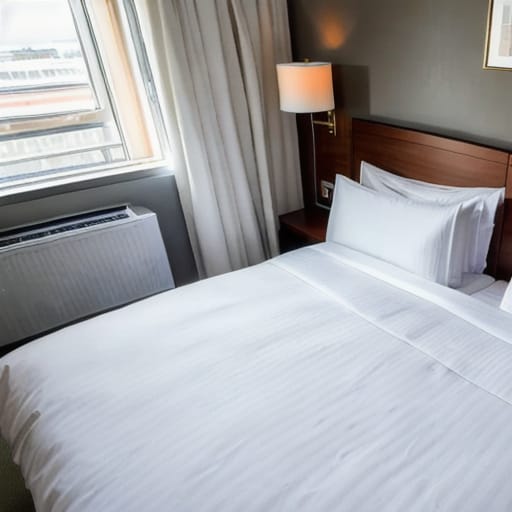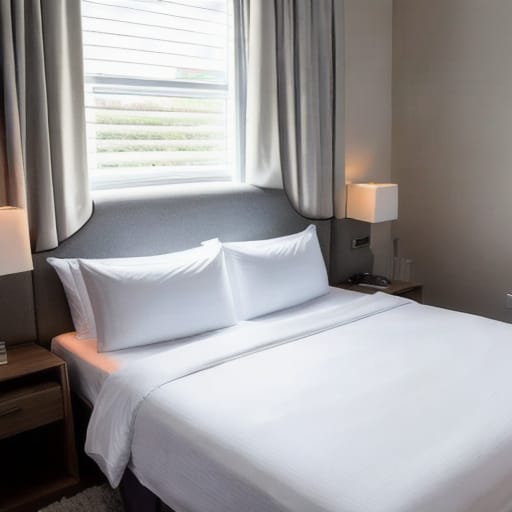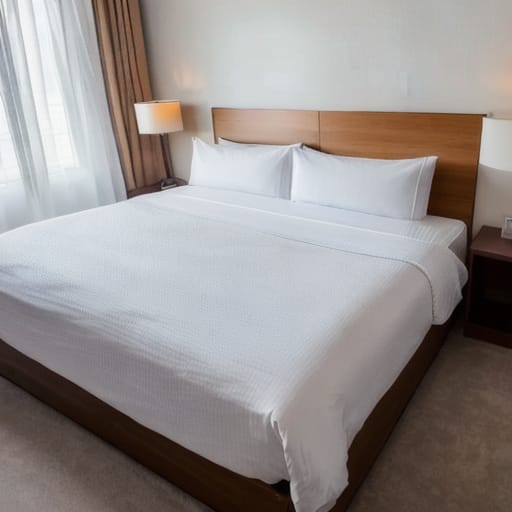When it comes to bedding, down comforters are known for being ultra-soft, comfortable, and warm. Their fluffy texture comes from the fine, fluffy down clustering inside. But this leads many people to wonder – with all that down filling up the comforter, do down comforters shed small feathers and down?
The short answer is yes, down comforters can and do shed to some degree. However, the amount they shed depends on several factors. We’ll cover everything you need to know about down comforter shedding, including what causes it, how much is normal, and tips to minimize feathers coming out of your comforter.

What Is a Down Comforter?
Before diving into shedding specifics, let’s quickly cover what exactly down comforters are and what makes them different than other comforters:
- Filled with down- down comforters are filled with a layer of fluffy down clusters that loft up and trap heat. The most common types are duck down and goose down.
- Light and warm – The downfill makes comforters very warm for their light weight. They are highly insulating without extra bulk.
- Luxurious feel – High-quality down has an ultra-plush, luxurious feel and drapes over the body.
- More expensive – Due to using high-quality down fill imported from birds, down comforters cost more than other materials like polyester or wool.
Why Do Down Comforters Shed?
Now that you know the basics of what a down comforter is, why do they tend to shed feathers even when they’re new? There are a few reasons:
- Natural product – Down clusters come from ducks and geese. This natural product will shed to some degree, just like your hair or pet’s fur sheds.
- Small particle size – The tiny down fibers and feather bits are very fine and lightweight. Their small size allows the particles to more easily escape through the outer shell over time. Heavier fills like polyester shed less.
- Dry, static environment – During winter months when heaters run, bedroom environments become very dry. The dry air and static electricity cause down particles to repel away from each other and outside the shell.
So in summary, shedding is caused by the down’s natural properties combined with environmental factors that pull the down and feathers out. While annoying, some shedding is inevitable. But you can take steps to minimize it.
Normal Shedding Rates for Down Comforters
How much shedding from a down comforter is normal? Here are guidelines on what to expect:
- First year – Most shedding happens in the first year, up to a handful of feathers monthly. Manufacturers say up to 2% of fill loss is normal in the first year.
- Following years – After the first year, shedding rates drop to just a feather here and there coming out every few months.
- Seasonal shedding – You’ll notice more shedding during winter and spring when indoor air is driest. Summertime shedding is minimal in comparison.
So while shocking at first, losing a few feathers weekly or monthly is well within the norm for down comforters, especially when new. The shedding rate decreases over time.
Factors That Increase Down Comforter Shedding
While some shedding is completely normal, there are a few factors that can increase shedding rates higher than average:
1. Lower Fill Power
Fill power measures the loft and quality of down. Standard fill powers are:
- 500-550 fill power – Decent quality
- 600-650 fill power – Better quality
- 700+ fill power – Best quality
The higher the fill power, the bigger and more resilient the down clusters. Higher fill power down is less likely to break apart and escape the baffles. Low-fill power sheds more.
2. Low Thread Count Shell
The thread count indicates how many threads are woven together per square inch of shell fabric. Two key reasons higher thread counts reduce shedding:
- Tighter weave keeps down enclosed
- A smoother shell reduces static allowing down to cling better
As a guideline, look for a minimum 300 thread count shell. Higher is better, with luxury brands using 1,000+ thread counts.
3. Poor Construction Quality
Cheaper down comforters can be less precisely constructed with looser stitching, thinner fabrics, and less reinforced seams. Look for these hallmarks of quality:
- Tight, reinforced stitching
- Durable shell materials like sateen cotton
- Generous seam folds rather than edges
With higher precision construction, less down escapes even after years of use.
4. Excess Laundering or Drying
Frequent washing and drying accelerates the breakdown of the shell and filling. The agitation works filling through the stitches while drying can damage fabrics.
As a guideline, only dry clean down comforters once every 2-3 years max. Dry on delicate or air fluff settings if machine drying.
5. Not Fluffing Regularly
Fluffing and reshaping your down comforter every few months keeps the filling evenly distributed and lofted up. Letting it become compacted causes fill to shift and escape.
Make fluffing part of seasonal comforter changing or monthly bedding washing routines.
Tips to Minimize Down Comforter Shedding
While you can’t fully prevent shedding, here are 5 handy tips to keep feathers from flying out of your down comforter:
- Use a duvet – Adding a duvet cover provides an extra barrier to trap escaping feathers.
- Lower heat – Keep bedroom heat below 70°F to prevent excessive dryness. Use a humidifier if the air is very dry.
- Air out monthly – On sunny days, hang the comforter outdoors to air, fluff, and refresh.
- Wash gently – Use front-loading washers on delicate cycles with mild detergent to reduce wear.
- Quality over cost – Splurge on the best quality, high fill power down comforter you can afford. It sheds dramatically less over time.
While fighting the occasional feather, rest assured your investment in a quality down comforter will pay off for years to come in unbeatable softness, cloud-like comfort, and heavenly warmth.

Types of Down Comforter Construction
Beyond fill power, the construction and stitching pattern used are vital factors affecting comforter durability and shedding rates. Here are the 4 main types and their pros and cons related to shedding:
Baffle Box Down Comforters
How it Works
- The shell is divided into large fabric boxes with stitching lines separating each section.
- Downfall is evenly distributed among the sections.
- Dividers keep the filling compartments separated.
Pros for Shedding
- Large compartments limit the shifting of down clusters
- Reinforced walls provide excellent durability over decades
- Very tight box stitching seals in feathers
Cons for Shedding
- More seams mean more needle holes feathers could escape
- A tear in any wall risks spilling larger amounts of down locally
Over decades of use, baffle boxes will likely shed the least among style options. But if a seam pops 20 years in, you’ll notice significant local shedding.
Sewn Through Box Stitch Down Comforters
How it Works
- The shell fabric is stitched from top to bottom tightly together in a grid pattern.
- The lines of stitching create small fabric boxes filled with down.
Pros for Shedding
- Very tight quilting keeps feathers packed in
- Many tight stitches mean less loss from any one seam popping
Cons for Shedding
- Over time, needle holes widen allowing down escape
- Less durable stitching more prone to failure
- Downshifts to empty boxes more easily.
The tiny boxes make sewn-through comforters affordable. But over 5+ years, the tiny holes in shell fabric allow increasing feather loss before fully failing.
Channel Quilted Down Comforters
How it Works
- Long channels run horizontally from edge to edge.
- The channels make room for thick lines of downfill to loft up.
- Stitching keeps the channels down from shifting.
Pros for Shedding
- Wide bands of fabric overlap and protect seams
- Taut fabric resists developing small holes
Cons for Shedding
- Narrow spacing between channels risks bunching over time
- Feathers near needle holes get pulled through easily
Channel construction strikes a nice balance between affordability and longevity. But beware of down-shifting issues over time.
Gusseted Down Comforters
How it Works
- Like a baffle box design but with extra side panels.
- The inserted wall panels make the comforter thicker and taller.
- Provides specifically shaped, 3D compartments for down to loft into.
Pros for Shedding
- Very tightly packed down resists shifting
- Gussets support thick down layering without collapsing
Cons for Shedding
- Complex construction costs much more
- Many layered seams provide openings for shedding
If designed well, gusseted-down comforters resist shedding better than any other style, but come at a luxury cost. Look for woven, reinforced gusset seams on high-end models.
How To Choose the Best Down Comforter
Now that you know what to expect for shedding and construction impacts, use these guidelines to select the best down comforter for your bed:
1. Choose Proper Warmth Level
First decide if you want a comforter for all seasons, winter only, or extra warm winter use based on your climate and sleeping preferences. Here’s a quick warmth guide by filling weight amounts:
- Lightweight (300-500 fill power) – Good for summer or mild climates
- Mid-weight (600-700 fill power) – All-season comforters
- Heavyweight (700-900+ fill power) – Very warm, best for cold winter use
Choose higher fill powers for colder regions and maximum coziness. Going too heavy causes overheating issues.
2. Evaluate Construction Quality
No matter what warmth level you select, always examine construction and fabric quality up close before buying. Here is what to look at:
- Tight, small box stitching patterns with reinforced seams
- Thicker, tighter woven shell materials like sateen, percale, or silk
- Well-constructed baffle boxes or gusset sides
- Durable stitching without loose threads
premium European brands use finer stitching needing higher magnifications to see properly. But no matter the style, quality construction ensures your investment will last decades rather than years before needing replacement.
3. Select Easy Care Fabrics
Along with quality construction, choosing the right shell materials greatly reduces wear from washing and drying. Here are the top finish fabric recommendations:
- Sateen Cotton – Very sleek but thinner
- Percale Cotton – More textured but durable
- Silk – Luxurious but expensive
- Rayon – Very smooth and affordable
For budget options under $200, percale cotton offers the best mix of easy care and long-term durability. Silk luxury models cost over $1000 but will far outlast cotton shells.

Conclusion
To wrap up, while all down comforters shed small amounts of feathers, most shedding happens in the first year before reducing to just an occasional feather here and there.
Factors like lower fill powers, cheap construction quality, and insufficient care accelerate shedding rates. So be sure to select the properly rated, best constructed down comforter your budget allows while using care tips like duvet covers and infrequent dry cleaning to limit wear.
While requiring some occasional upkeep, a quality down comforter carefully cared for turns sleeping into a heavenly night’s rest for 10-20 years or more of blissfully warm, peaceful comfort no synthetic alternative can entirely duplicate. It remains one of life’s simplest and most luxurious pleasures worth the investment many times over.
Frequently Asked Questions
Do all down comforters shed feathers?
Yes, all down comforters will shed at least a few small feathers and down bits over time. This is normal due to the natural properties of the down that make it fluffy yet lightweight enough to escape the shell. With proper care and quality construction, shedding can be minimized but not fully eliminated.
What causes a down comforter to shed more than normal?
The excess shedding is usually caused by lower-quality construction elements like low fill power, cheap shell fabrics, loose box stitching, or thin seams. Environmental factors like excessive laundering, drying, or fluffing can also accelerate shedding over time.
How much shedding is normal for a down comforter?
Most shedding happens the first year, up to a handful of feathers monthly. After year one, shedding drops to just a feather here and there every few months. Some increased shedding in winter is expected as warmer, drier indoor air can cause more static electricity and dryness.
How do I choose a down comforter that won’t shed excessively?
Look for down comforters with the highest fill power you can afford, ideally above 600. Carefully examine the box stitch patterns for tight, reinforced construction. Select smooth, tightly woven cover fabrics with a thread count over 300, ideally over 500. Following care tips like using a duvet can further minimize shedding.
What is the best way to clean a down comforter to reduce shedding?
Only dry clean down comforters once every 2-3 years at most, using a front-loading washer on a delicate cycle with a mild detergent alternative. Line dry or machine dry on low heat. Frequent washing and drying breaks down materials and stresses seams leading to higher shedding rates.








